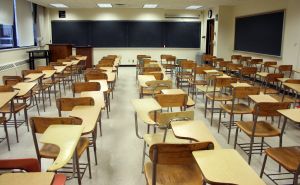College students in the Los Angeles, California area this year, are now being asked to keep track of more than just their studies as they attend classes at California State University Northridge. They are also being expected to know how to identify and avoid toxic asbestos containing materials recently located on campus, which could cause their death many years after they have graduated. A report released in January by the California State University Northridge environmental health & safety department indicates that there are still eighteen buildings on campus contaminated with asbestos-containing construction materials. The report was released in satisfaction of the University’s requirement to notify the public annually of locations of asbestos under the California Health and Safety Code.

The California State Legislature adopted the public notification requirement in the California Health and Safety Code in response to the public health threat posed by asbestos. Every year thousands of people are diagnosed in the United States with mesothelioma, an incurable cancer caused by exposure to asbestos fibers released from asbestos containing insulation and construction products. A majority of these products were manufactured, sold, and distributed prior to the 1980’s, however asbestos use is still not banned in the United States. In fact, in 2010, the use of asbestos in the United States increased, as compared to 2009 figures. Disturbingly, mesothelioma and other asbestos related diseases do not appear in patients until decades after the victims inhaled the asbestos fibers.
Alarmingly though, despite the fact that University California State Northridge has identified locations of the asbestos containing materials, in proximity to its student body, it currently has no plans to abate the asbestos and remove it. Rather, California State University Northridge is taking the position that as long as the asbestos is not disturbed or removed in an improper manner, it does not pose a hazard to the student population.
The University is advising the teachers and students to try to avoid drilling or punching holes, affixing objects to ceilings or walls, in locations identified in the report where asbestos is present.
According to California Mesothelioma Attorney, Mike Mandelbrot, of the Asbestos Legal Center in San Francisco, that’s not realistic, and not enough.
“California State Northridge is playing Russian Roulette with the innocent lives of their students.”, said Mr. Mandelbrot. “The University knows full well it cannot control whether any person who enters those contaminated building might disturb the asbestos containing materials and expose others who are present. Moreover, another earthquake certainly could dislodge the material. The health risk to the public far outweighs the cost of removing the asbestos containing materials. The University should start removing the material without delay.”
According to California State University Northridge staff, after the Northridge earthquake of 1994, asbestos was identified and removed from some of the buildings on campus during the renovation projects.
The current study identified the asbestos containing materials during building inspections wherein material samples were collected. Later a laboratory analysis of the material were performed meeting testing standards set by the National Institute for Occupational Safety & Health and Environmental Protection Agency.
Specifically, the asbestos containing material found on campus included floor and ceiling tiles, thermal pipe insulation, weather stripping, putty, and asbestos containing pipes commonly referred to as transite.
Mr. Mandelbrot and the Asbestos Legal Center are currently offering free consultations to people who are suffering from Mesothelioma, Lung Cancer, Asbestosis, and other asbestos related diseases, and can be contacted at 1-800-970-3878.
 Mesothelioma Lawyer Blog
Mesothelioma Lawyer Blog

